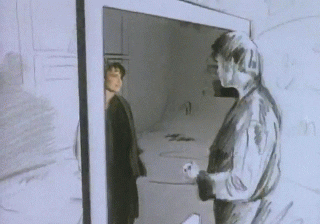“The great thing about the animation process is that it goes from, I write the lines, it goes to the actors, the actors bring a whole world to that, they bring the characters to life, then it goes to the animators, then it goes to the editor who cuts it together, and then you screen it, and it goes back through the system again.”
— Michael Arndt, Screenwriter, Toy Story 3
Every animation studio has one primary goal, to capture the audiences' attention with their out-of-this-world yet realistic animated videos. However, there are many steps that animation video production goes through before studios even reach this milestone.
The animation production pipeline is a critical workflow to which every animation studio should adhere, but at the center of the workflow are all the animators involved and the steps they incorporate to perform and excel at their work.
After all, producing an impactful video involves two significant aspects, i.e., a creative animation team and a thorough animation process that solves the pain points of creating animated videos.
This blog weighs in on the animated steps every animation studio should have, including a look into the animation steps each animator follows and whether animation studios need to rely on these animated steps.
7 Powerful Animated Steps That Every Animation Studio Should Have
The animation production pipeline includes three stages involving many roles; however, the animated steps every animation studio should have are the overhead workflows of an animation pipeline pre and post-video production.

GIF by Gareth Fowler via GIPHY
1. Research and Analysis
When getting started on an animation project, the first animated step is conducting comprehensive research; for instance, studying physical movements and analyzing a particular era's speech and fashion to produce an authentic animation image.
An animation studio vested in perfecting its craft and output relies on research before moving forward with the animation process.
At this step, an animation studio should perform the following two tasks,
- Acquire as much information as possible about industry developments, consumer or viewer behavior, funding sources, etc.
- Keep abreast of trending animation genre preferences and ongoing animation processes, and benchmark its idea for the project against other studios.
The animation process comes in a spectrum of cartoon, vintage, anime wallpapers and backgrounds, and more through various modeling tools. Research is beneficial for an animation studio to find its specialty in the diverse animation industry and dazzle audiences with its unique perspective.
2. Animation Conceptualization
After researching, conceptualizing the story, style, and animation behind the video takes precedence. In this animated step, an animation studio takes on a more creative and slightly technical approach to the idea.

Image by SpongeBob SquarePants via GIPHY
A studio has this step to align storytelling, character movements, and transitions in positions. Considerations such as the animation layout, script, character requirements, and ultimate expectations about the video are critical.
Once the creative aspect is complete, animators in a studio apply this animated step to,
- Ideate within the expected time length of the video.
- Discover which visuals and transitions engage viewers.
- Realize how to convey the message using minimum text.
3. Story Conceptualization
Animation studios should have this animated step to test their copywriting skills. Like a comic book, thinking about the story in frames lays the foundation for scriptwriters, character developers, and modelers.
At this point in the animation process, animators write short dialogues, conceptualize animation backgrounds, and select suitable color combinations concerning a video scene.

GIF by MillysDiary via GIPHY
This part involves creating a visual representation showing every scene step by step and focusing on every detail like objects, actions, visuals, and flow so that any person can easily understand the plot of the video.
The animation process benefits from this visual representation because it has an animation timeline showing the movement of specific characters and outlines the animation with clarity and precision.
4. Voice-over Recording
Selecting a fitting voice-over for the video is one of the most critical steps in the animation process; an animation studio should have this animated step to make the narrative more impactful and persuasive.
Finding and choosing the right voice-over animators is not an easy process, so an animation studio should have this step to confirm the voice-over's experience and if they give the video an original feel, tone, and pitch.
5. Animation Styling
The fifth point in the animated steps every animation studio should have is styling the animated characters and video. After the voice-over, studios should style the video. Why? Before styling, animation videos are like white paper without any color.

GIF via GIPHY
Animators visualize the screens and add styles like colors, images, and background illustrations according to the video requirements and with the audience in mind. To create magic, animators follow the director's guidelines before adding colors to the video while avoiding installing vibrant or triggering colors in animated videos.
6. Animating
In this animation step, the video absorbs animations, giving them a shape and syncing the voice-over with the video and specific characters according to the animation timeline.
7. Adding Music
Lastly, animators add the background music into the video, pivoting on the animation's scene and mood. Animation studios should take this animated step seriously to refrain from copyright infringements on the music they include in the video.
An animation can use music with no copyrights or hire a composer if it fits within the budget or if original melodies and music are preferred.
A Look Into The Animated Steps For Each Animator
Although the number of animated steps to finish a project may vary from studio to studio, creating complete animated videos is a complex system bringing together a network of people, hardware, and software. Every animation studio requires a reliable structure and a detailed framework to undertake this complicated process efficiently and affordably.

Pre-production
Refining the idea occurs at this stage, involving taking the concept, specifying it, and developing it into a feasible plan. Upon finalizing the story, writing the script and planning the shot sequences commence.
The pre-production components are brainstorming, scripting, concept art, storyboarding, and previsualization, which we discuss thoroughly below.
1. Brainstorming
The premise of this animation step is simple— animators should suggest and write as many ideas as possible.
Brainstorming can involve the following animation steps:
- The animation team generates as many ideas as possible.
- Sifting through relevant ideas for the best few.
- Finalizing the layout and concept.
2. Scripting
Producing an animated video begins with an excellent script enlivening its characters, setting, and plot. Animation studios should have this animation step to create an outline for every occurrence in the story, including audio, e.g., dialogue.

GIF by theglassscorch via GIPHY
Scriptwriters initiate the imaginative part of animation creation, and the following steps are advisable for these animators:
- Realizing what the video demands from the script.
- Matching the script length with the video length.
- Adding surprising elements to hook the audience.
- Communicating and connecting emotionally to captivate.
3. Concept art
The process of bringing the abstract idea and script to its first visible form occurs at this step. Concept art is a type of illustration but more design-centric and involves significant idea iteration and calculating.
Moreover, concept art offers constant visual support for animation studios, acting as a reference throughout video production and showing a project's progress.

GIF by Upamanyu Bhattacharyya via GIPHY
For this animation step, studios benefit from having a concept animator who can:
- Adapt visual art to the script and video direction.
- Design practical concepts.
- Guide the viewer's focal attention with arrows.
4. Storyboarding
An animation studio should have this step to finalize storyline development and concept art, acting as the spine of the animation process. The previous section covers the bulk of storyboarding in the story conceptualization animated step.
Moreover, animators at this animation step,
- Take a scene from the script and make a shot list, keeping in mind how particular camera angles tell the story or make a scene more impactful.
- Sketch all the shots as rough art, filling in the most apparent elements of each scene, indicating motion, and including prospective props.
- Add additional words at the bottom of the images to provide more context about the scene's events upon completing the sketches.
5. Animatics
Devising the video's visual plan falls into the workspace of animatics. This animation step helps align the video with the director's intent.
Laying the film sequences into an array of stills only with relevant detail helps the animation team have a unanimous idea and grasp the purpose of complex sequences before production begins.
Production

GIF by South Park via GIPHY
To further understand the animated steps an animation studio should have, below are the critical roles and the steps they comprise to make the production stage efficient.
- Layout
- Modeling
- Texturing
- Lighting
- Rigging
- Animation
- Voice-over
1. Layout
Conceptualizing the environment based on the story of the video and adapting the stylistic choices of the video falls on the layout design.
Overall, this animation step is responsible for placing all the elements required for establishing the animation sequence of the video; in doing so, lifting most of the heavy load of assembling shots into virtual scenes.
2. Modeling
During modeling, animators transform the character's animated features into three-dimensional figures. To achieve this, modelers embark on the below animation steps:
- Work with the art director so that the design of each model can comply with the animation style.
- Assist the technical animator with furnishing a skeletal framework and developing a skin. Once done, modelers add facial expressions, paying close attention to adding specific muscle tensions.
- Upon finishing the model, it progresses to the texture painters and rigging department for adding final touches before animation and rendering.

3. Texturing
An animation studio benefits from this animation step to tap into one of the most significant human senses— touch. This step is critical for animators to stimulate and engage viewers' sense of feel and touch.
To effect this animation step, animators enhance the look of a character's surface; texture animators work with several elements, such as wrinkles, scales, fur, sweat, and mud.
4. Lighting
Without lighting, animated videos would be flat, and every animation studio should have this animation step to effect light to reinforce the emotion of the video and make it look and feel credible.
Animators responsible for this animation step benefit a studio by perfecting lighting that can:
- Set the mood with the lighting aspect of the video.
- Shape structures.
- Direct audiences' attention with light and color.
- Gather and utilize reference shots.
- Help successfully lighten and rendering workflow.

5. Rigging
Rigging connects animation assets to animate them quicker; hence, every studio should have this animated step— to represent and move individual character components using interconnected digital bones to function as one motion of the character model.
6. Animation
This crucial step gives life to the characters and scene, enabling an animation studio to tell convincing stories that trigger the audience’s emotions and perceptions.
The animation steps that make this role significant to a studio are:
- Keyframe the character or object's key form, saving time by creating workable and easily changeable, rough character motions and expressions.
- Figure the background layout of an animated scene with the character's movements and scene transitions in mind to maintain consistency throughout the video.
- Animators apply color correction to smoothen the colors in each shot to prevent distracting aspects and color grading for aesthetic use and make the video visually coherent.
7. Voice-over
Adding the audio and voice-over narrations is an essential animation step for an animation studio. For this role, the animated character's voice must fit the tone and personality.
To effectively choose the best voice, animation studios employ these steps:
- Check the story brief and character details to realize suitable voice types.
- Review the budget to remain within its limits when contracting voice-over animators.
- Evaluate the script concerning difficult word pronunciations.
- Match the voice with a scene's mood and scenario to elicit a physical or emotional reaction.
Post-production

GIF by SpongeBob SquarePants via GIPHY
In the final stage of post-production in the animation pipeline, three main activities take center stage:
- Composting
- Sound editing
- Rendering
1. Compositing
Credit to this step, animation studios can create almost any visual aspect. All VFX in animated videos is the result of compositing.
An animation studio benefits from this step by finalizing the color use, adjusting entire scene layers for rendering, deciding on compositing elements, etc.
Creating a final, life-like illusion in compositing requires an animator with an arsenal of skills, reflecting why this animation step is significant to a studio.
2. Sound Editing
A studio should have this animation step to install final audio in animated videos, including sound design to create acoustic aspects from scratch or select and balance audios from several sources to finalize sound effects.
3. Rendering
Every animation studio should have this animation step to complete the video production process, rendering every previous step's contribution as a complete work of art

GIF by Matthew Butler via GIPHY
By rendering, an animation studio benefits from animators checking for continuity errors in sound, dialogue, and editing and fixing any defect for the final video to come out seamlessly.
Do Animation Studios Need To Rely On The Animated Steps?
Every animation studio is unique, and its animation processes may vary. This comprehensive guide of animated steps every animation studio should have is informative about the steps, but a studio may realize its procedures according to its preferences, timelines, and services.
The animated steps are guidelines animators in an animation studio fulfill to produce videos efficiently and within the quickest throughput, allowing each animator and studio to have their process while prescribing to the animation pipeline.
This blog is the tip of the iceberg; more than creating processes, animators can learn how to start an animation studio and build a 6-figure freelance animation business by joining the Business of Animation free masterclass.
Otherwise, animators can discover how to grow their businesses with the Business of Animation animation accelerator.



